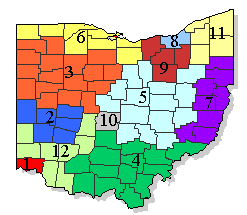 In a DUI case (called ‘OVI’ in Ohio), what happens when evidence is destroyed because a prosecutor does not timely respond to a specific request for that evidence? It depends on the jurisdiction. In ten of Ohio’s 12 appellate districts, the case would likely be dismissed. In the other two Ohio appellate districts, there would likely be no sanction. Two appellate cases from two Ohio cities illustrate the outcome depends, in large part, on where the case is heard.
In a DUI case (called ‘OVI’ in Ohio), what happens when evidence is destroyed because a prosecutor does not timely respond to a specific request for that evidence? It depends on the jurisdiction. In ten of Ohio’s 12 appellate districts, the case would likely be dismissed. In the other two Ohio appellate districts, there would likely be no sanction. Two appellate cases from two Ohio cities illustrate the outcome depends, in large part, on where the case is heard.
SCOTUS Cases on Destroyed Evidence
Before we get to the Ohio cases, it is important to know the Supreme Court of the United States (SCOTUS) has addressed the issue of destroyed evidence. In California v. Trombetta, the Court held a defendant is denied due process of law when a law enforcement officer destroys ‘materially exculpatory’ evidence, and the defendant must prove the evidence was ‘materially exculpatory’. In Arizona v. Youngblood, the Court held a defendant is denied due process of law when a law enforcement officer destroys ‘potentially useful’ evidence in bad faith, and the defendant must prove the officer acted in bad faith.
Those cases addressed destruction of evidence by law enforcement. They did not discuss destruction of evidence due to a prosecutor’s failure to have it preserved. Two Ohio cases addressed the latter issue with conflicting results.
Nearly Identical Cases in Cincinnati and Delaware
In State v. Anderson (Cincinnati), the defendant was arrested for OVI and transported to a police station, where he took a breath test. Three weeks later, the defense attorney made a discovery demand requesting police station video and filed a motion to preserve the police station video. The prosecution did nothing to preserve the video until after the video was destroyed, over one month after the defendant requested it.
In State v. Sharma (Delaware), the defendant was arrested for OVI and transported to a police station, where he took a breath test. Four days later, the defense attorney made a discovery demand requesting police station video and then sent a letter to the prosecutor requesting the police station video. The prosecution did nothing to preserve the video until after the video had already been destroyed, over one month after the defendant requested it.
Is this sounding familiar? I represented Mr. Sharma, so it is all too familiar to me.
Essentially Opposite Outcomes in Cincinnati and Delaware
In State v. Anderson, the First District Court of Appeals applied the ‘materially exculpatory’ test from California v. Trombetta. However, the Court shifted the burden of proof to the prosecution. The Court stated, “Once Anderson moved to have the evidence preserved and the state destroyed the evidence, the burden was on the state to show the solely inculpatory value of the videotape.” Anderson’s case was dismissed.
In State v. Sharma, the Fifth District Court of appeals applied the ‘materially exculpatory’ test from California v. Trombetta. Unlike the First District, the Fifth District did not shift the burden of proof to the prosecution. The Court found the defendant did not prove the video was ‘materially exculpatory’ and also did not prove the prosecutor acted in bad faith. Sharma’s conviction was upheld.
A Tale of Disparate Treatment
The Fifth District is one of two Ohio appellate districts which do not shift the burden of proof (the other is the Second District). In those two districts, the Courts are borrowing tests for evidence destroyed due to law enforcement conduct and applying those tests to evidence destroyed due a prosecutor’s conduct. As it relates to evidence preservation, law enforcement officers and prosecutors are not similarly situated and should not be held to the same standards.
As a result of the contrasting analyses in the appellate districts, a defendant in Delaware is treated differently than a defendant in Cincinnati. The Ohio Supreme Court should address this issue and adopt the burden-shifting analysis so the law is uniform and fair throughout the state.
 Columbus OVI/DUI Attorney Blog
Columbus OVI/DUI Attorney Blog

